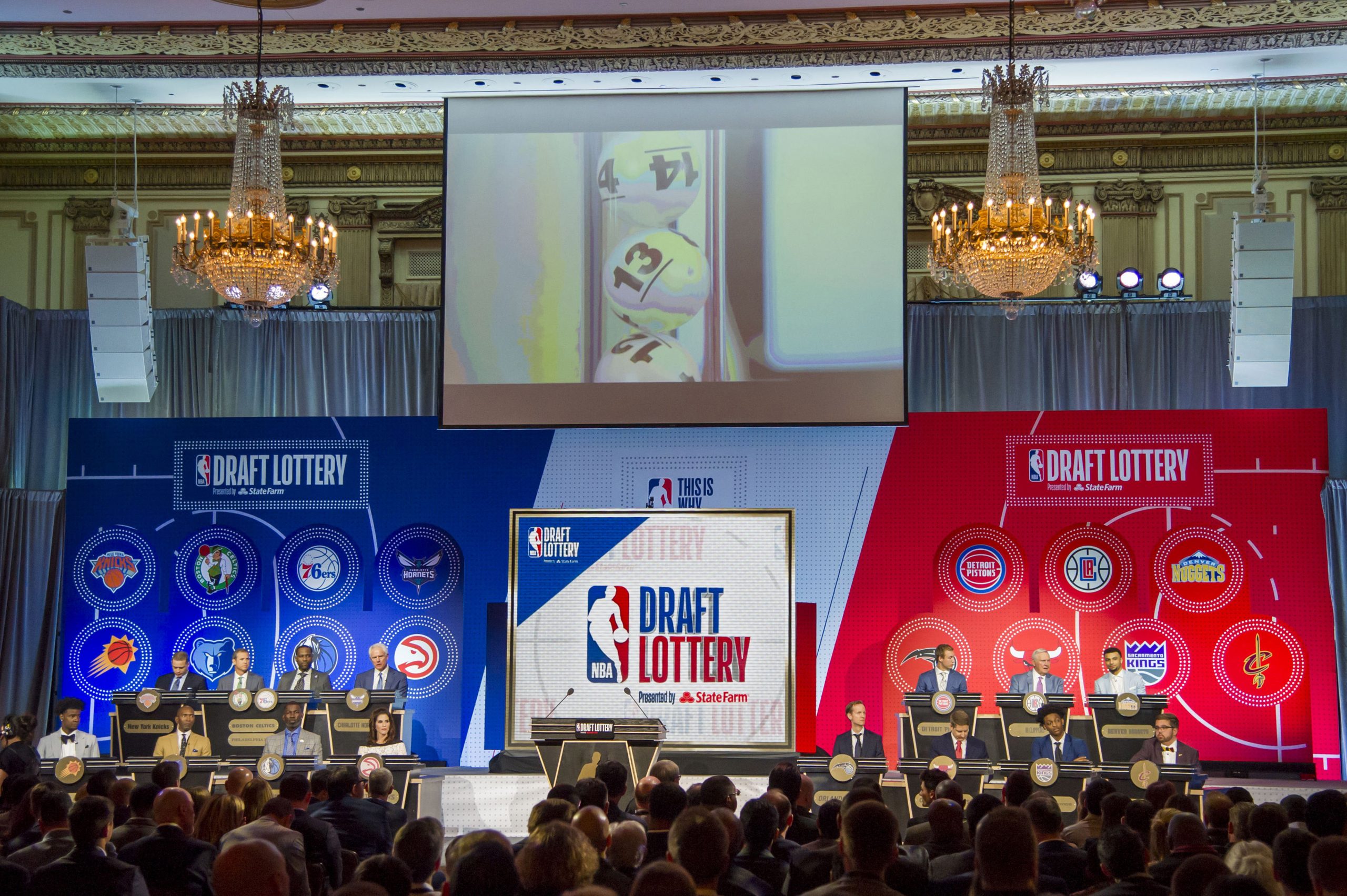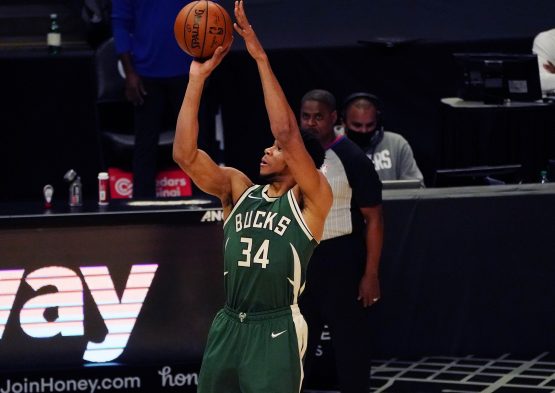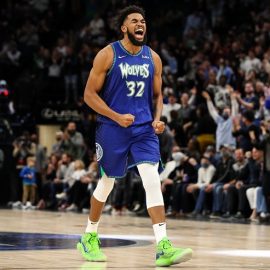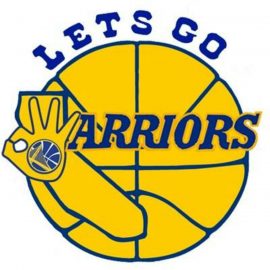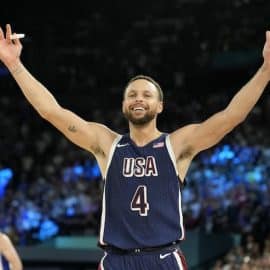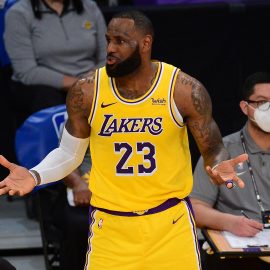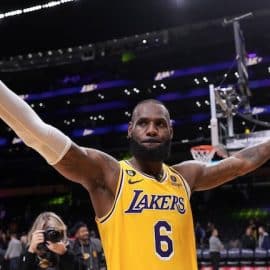The NBA Draft is an event years in the making. Teenagers are scouted years before they are even selecting a college, and are featured in competitions domestic and international. Teams and media have rankings, tiers, projections and tape breaking down these prospects from as early as 14 or 15.
Just hours after the 2017 NBA Draft the 2018 class was being ranked and mocked. NBA fans and writers — of whom I am both — watched as the last few prospects picked their schools, as they debuted for college and international teams, as they played in tournaments and title games.
Over the past few months we have all raced to become experts. Here at The Lottery Mafia we have two of the industry’s best draft evaluators working, with Gabriel Allen and Ilia Shatashvili writing draft profiles, mock drafts and every other layer of draft content a fan could want. They are the ones watching film, breaking down the numbers, and providing the high-level knowledge you need after not having the time to do the same.
I come from the other side of things, where I cover the NBA and have relatively less exposure to the college game — and especially to the international game. But that doesn’t stop me from sharing my opinion, which I will do so below. My Big Board is based on a synthesis of talent evaluators and a smaller sample size of games, plus a knowledge of where the current game is in the NBA.
Without further ado, we begin the Big Board with the only player in my top-14 who plays basketball outside the confines of college basketball. My clear top player, in a tier of his own, is Luka Doncic.
Big Board
Tier 1
1. Luka Doncic, Real Madrid
Walk-off game-winner from Luka Doncic, who finished with 24 PTS (7-for-12 FGs), 9 REBS, 4 AST and 7 TOV in 31 MIN. Not many 19-year-olds in the world comfortable taking and making that shot on the road in an atmosphere like Pionir. Looked every bit of a potential #1 pick tonight. pic.twitter.com/VyFAeuUL0S
— Mike Schmitz (@Mike_Schmitz) March 30, 2018
Luke Doncic will be knocked because he is from Europe, and thus not subject to the same process as the other elite prospects. He also suffers from being a European wing, a specific classification that has struggled in recent NBA history. He is a great, but not elite shooter, is not the highest of athletes, and does not have a full arsenal of defensive tools.
With the negatives out of the way, I will commence with the positives. Doncic is a 6’8″ point guard, in essence, in the mold of James Harden or Manu Gnobili, yet with even more size. He can score at all three levels, and has more skill than any player to enter the NBA in years, if not decades.
At just 19 years old Doncic is the best player in Europe, dominating in both Euroleague and the ACB as the leader of Real Madrid. Doncic won nearly every possible award available to him, including MVP of both leagues. After leading Real Madrid to a Euroleague title, just this week he led them to an ACB title as well.
Luka Doncic is CLUTCH with an incredible three-pointer on one footpic.twitter.com/zZJlsZ2POH
— Sportando (@Sportando) June 19, 2018
I want to make it clear that I see Doncic as a special player who is perfectly-built for the modern game. Clear top prospect in this draft.
Tier 2
2. Michael Porter Jr., Missouri
Whoa, whoa, whoa! What is Porter doing at #2 on my Big Board? He’s only that high for the Sacramento Kings, and everyone knows they’re crazy. He’s just a no-defense chucker who will hog the ball whenever he’s not holed up with a broken back.
There are certainly concerns about Porter, and this ranking would be contingent on clean medical records — which we unfortunately do not have access to either way. But if healthy, Porter has the potential to be truly special.
Offensively, Porter can score from anywhere on the court, with a strong pull-up game and a crafty step-back. He can shoot off the dribble or off the catch, and once regained, his athleticism and finishing around the rim are strong. He is underrated for his passing ability, and specifically loved to pass to the roll man once the defense committed.
Defensively his problems seem to be of the “don’t” variety rather than the “can’t” variety, which gives me confidence about his upside. He has the tools to be an above-average defender or more, and his size is perfect to defend opposing forwards.
In fact his size — 6’11” with a 7’0″ standing reach — means he could realistically play some small-ball center in the future. A team that features Porter can downsize to absolutely dynamic offensive lineups in certain situations. The injury concerns are real, and Porter wont be fully healthy until his second year, but he should be a really good player. His position — combo forward — is significantly more valuable than center and pushes him above the next few players.
3. Jaren Jackson, Jr., Michigan State
An important part of the NBA Draft is projecting how a player will contribute to winning basketball. Some players have elite physical gifts and incredible production, but their ability to help a team deep into the playoffs is a more difficult ask.
For Jaren Jackson Jr. that projection is easy to make. A long, agile big man who can be the quintessential stretch-5, “JJJ” is third on my board for a reason. He does not have the most skill or production out of this draft’s big men — not by far — as he could barely stay on the floor at Michigan St.
But when he did he was the best defensive big in the league, protecting the rim and switching out onto the perimeter with ease. His quick feet and hands provide a maze of limbs that opponents have to navigate to pass or drive.
Offensively he should be an easy 3-point shooter, not only in the pick-and-pop but also as a trail-shooter or moving on screens to the perimeter. His form is fluid and relatively quick for his size.
The problem with taking Jackson this high is that he will never be the first or even second offensive option on a title team. Drafting Jackson means you are trying to find Al Horford or Draymond Green, a two-way player crucial to winning but dependent on certain other players to drive to the title. That’s why Doncic and Porter are higher on my board.
4. Mohamed Bamba, Texas
Bamba is a physical freak, with the longest wingspan ever recorded and a frame begging to lead to lead the league in blocks. He has been working on his outside shot since the season ended with renowned shooting coach Drew Hanlen, and has impressed in workouts.
There are downsides, and ultimately that moved Bamba down from 2 (where he was a few weeks ago) to 4 on my board. As Alex West, draft expert at 94feetreport.com, pointed out on a recent podcast, Bamba’s frame is at risk of joint damage down the road if he adds weight and muscle — something he will have to do in order to guard NBA centers.
He needs to add athleticism and lateral agility to be a top-level switch defender, and his motor ran inconsistently at Texas. However, Bamba is incredibly intelligent and understands the game at a high level. I think that throughout the first 4-6 years of his career he will get substantially better each offseason and could easily be the best big in this class.
Tier 3
5. Miles Bridges, Michigan State
Bridges is a former elite prospect who elected to stay in school for another season, and many draft pundits seem to be dropping him down their boards in lieu of more exciting freshman prospects such as Wendell Carter Jr. or Collin Sexton. That does not make sense to me.
A strong shooter during his freshman season, Bridges returned and proved that his shot is consistent and fluid. He can shoot off-balance, coming off screens, off the dribble, or literally anywhere else on the court. Other than Trae Young or Kevin Huerter, Bridges has the best deep shot in the draft.
He also brings strong defensive tools, plenty of switchability and underrated ball-handling and passing skills. He may never be the top option on a team, but he should be an above average starter for years playing the league’s most important position.
6. DeAndre Ayton, Arizona
I don’t bear any animosity towards Ayton, and his floor is very high as a player who will come in and make an immediate box score impact in the NBA. It’s not unrealistic to see him putting up 20 and 10 by his second season. His physical tools are incredible.
Yet watching him, I’m always leaving finding myself unsure of whether he can help a team win at the next level. If Jaren Jackson Jr. was elevated because of his fit in the modern game, Ayton was the player to drop because of it. Can a team win a title dumping the ball into the post 25 times a game? But if Ayton isn’t a post scorer, should he be a top-5 pick as a spot-up shooter and inconsistent rim protector?
I like Ayton, but I don’t think he’s a piece on a title contender unless he changes his approach to the game.
7. Marvin Bagley III, Duke
Bagley is another physical marvel, one of the best pure athletes in the entire draft. He also brings at least some of every skill — he can shoot, he can pass, he can handle, he can push in transition, he can switch on defense. But two things scare me about Bagley.
First, I think his physical tools are slightly lacking as a defender. Offensively his explosion and finishing are incredible. But defensively his limited length means that even if he develops good defensive instincts — and those need some work — he will be hard-pressed to block or alter shots because he won’t be long enough. He was a monster rebounder in college, but will his limited length hold up against NBA size?
Secondly, Bagley needs to be a center to leverage his offensive skillset. Yet many teams may try to play him at the 4, or at least pair him with another traditional big man. That could limit his impact and keep the team from finding its best success.
Properly deployed, Bagley has the talent to be extremely productive, and will most likely add to his game in significant ways over the next few seasons. Yet the question marks are large too. Bagley is the final player I could see being the best in this draft five years from now.
8. Wendell Carter, Jr., Duke
Wendell Carter looks like a modern big man, with interior passing skill and an outside shot. He can score inside, he can rebound, he can protect the rim if positioned correctly.
On the other hand he probably is not going to be an elite defender, either as a weakside shot blocker or a switch defender. Perhaps he can get there, but right now he looks like an above average offensive player and an average defender. That is not the role a team needs its center to play.
In fact, that’s the biggest knock on centers in this draft — teams need more Al Horfords and Clint Capelas, not Karl-Anthony Towns and LaMarcus Aldridges. This draft does not offer many defensive centers at the top.
Carter has a lot to offer and could be the best big in the draft. But he may also lack that truly special quality that sets him apart.
Tier 4
9. Shai Gilgeous-Alexander, Kentucky
Gilgeous-Alexander has the size NBA teams covet at the point guard position, which Collin Sexton and Trae Young cannot claim. On a Kentucky team loaded with prospects it was SGA’s insertion into the starting lineup that set them on a path to success.
I believe in his defense and I believe in his shot, which make him the clear top prospect at the point guard position. He even has the length to play off-guard, something teams such as Charlotte or Los Angeles may consider.
10. Mikal Bridges, Villanova
If a team is looking for a future All-Star on the wing, they probably should look for a different player than Mikal Bridges. But if a team is looking for a player who can step in and immediately fill a rotation role, it’s Bridges.
He checks every box for a 3-and-D wing, with all the tools to be a positive team defender and a smooth shot. He has work to do as a ball-handler or elite lockdown perimeter defender, but at 10 you don’t expect a perfect prospect.
11. Collin Sexton, Alabama
Simply put, the competitive fire in Sexton is special and will drive him to become a better player every day of his career. It may also push his teammates towards greatness…or drive them insane. Sexton will need to learn to be a part of something instead of the sole driver of a team, and he lacks elite tools, but I believe in him as a player and a competitor.
12. Trae Young, Oklahoma
This may be crazy to push Young down so low, and I understand if you have to stop reading because you are so incensed. You have already spent a fair amount of time on the page, which is what I think the advertisers want anyway.
Young could be a special shooter, and he will absolutely be a special passer and playmaker. But he’s small, measuring at 6’1.75″ and with just a 6’3″ wingspan. He is not a superb athlete either. I think he will struggle to get past defenders, and will have his shot easily bothered by long defenders.
Defensively he will be a sieve, actively hurting a team’s defense. In the playoffs he will be hunted on possession after possession, and many teams will not even provide a player to hide him on. I love Young’s passing and the deep bombs are fun, but I think the downsides are massive.
Tier 5
13. Zhaire Smith, Texas Tech
No player has rocketed from unknown to lottery pick as fast as Smith has. A relatively unheralded prospect, Smith turned in a fabulous freshman season for the Red Raiders. Perhaps the best athlete in the draft, Smith was a defensive force and attacked the glass like a power forward despite standing just 6’4″ tall.
If Smith continues to improve, he could easily be one of the best players in this draft. But if he simply hit a late growth spurt and has mostly topped out at who he will be, then I see a player too small for his skillset. I want to believe in Smith, but I need to see more.
14. Jacob Evans, Cincinnati
What do you want from a wing player who is not called upon to be the primary offensive option? Would 6’6″ of passing, shooting and defense work? Because that’s what Evans has to provide.
This may be one of the highest spots you will see Evans in, but I am a big-time believer in his skillset. A team such as Denver, Milwaukee or Indiana would be well-placed to grab him as a solid contributor.
In the mix: De’Anthony Melton, Keita Bates-Diop, Robert Williams, Lonnie Walker
Notable names not anywhere close to the lottery on my board: Kevin Knox, Mitchell Robinson, Chandler Hutchison
Add The Sports Daily to your Google News Feed!
